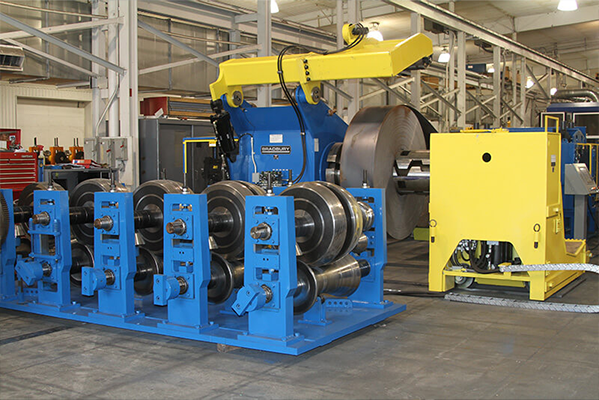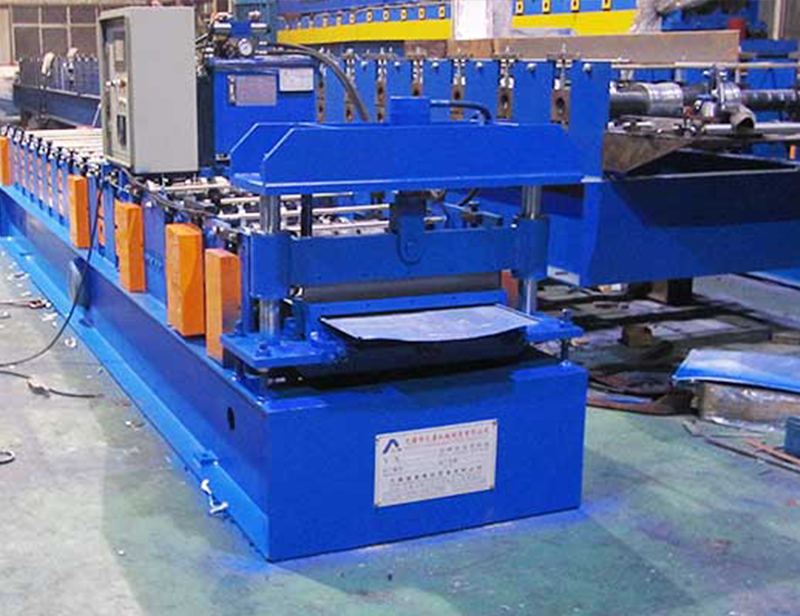Navigation Menu
Contact Us
- Email:
- info@wxavatar.com
- Address:
- Yurong Village, Yuqi Street, Huishan District, Wuxi, China.
Release Date:Apr 27, 2025 Visit:52 Source:Roll Forming Machine Factory
Roll forming is a widely used manufacturing process in industries like construction, automotive, and appliance manufacturing. It involves feeding a continuous strip of metal into a series of rollers, which progressively shape the material into a desired profile. While roll forming offers several advantages, one common question that arises is whether the process is expensive.
Initial Setup Costs
The primary factor contributing to the cost of roll forming is the initial setup. This includes the design and creation of custom tooling, such as rollers and dies, which are specific to the desired profile. The complexity of the part and the required precision play a significant role in determining the cost of the tooling. For simpler profiles, the setup costs tend to be lower, but for complex, intricate shapes, the tooling may become more expensive.

Moreover, the cost of materials used in roll forming can vary depending on the type of metal selected. High-strength metals, such as stainless steel or alloys, may drive up the material costs. However, roll forming is typically more material-efficient compared to other methods like stamping, as the process minimizes waste by using a continuous strip.
Volume and Production Efficiency
Roll forming becomes more cost-effective as production volume increases. The process is well-suited for high-volume runs due to its continuous nature. After the initial setup, the cost per unit drops significantly as more parts are produced. This makes it an ideal choice for industries that require large quantities of consistently shaped metal parts.
For smaller production runs, however, the initial tooling costs may not be justified, and alternative manufacturing methods like stamping or press braking might offer more cost-effective solutions.
Labor and Operational Costs
Roll forming machines are typically automated, which can help reduce labor costs. The machines are capable of running for extended periods with minimal operator intervention. As a result, the labor costs associated with roll forming are generally lower than those of processes that require more manual handling or frequent adjustments.
Additionally, roll forming is a relatively efficient process in terms of energy consumption. While there are costs associated with operating the equipment, these are typically lower than other manufacturing methods, which may require more energy-intensive operations.
Maintenance and Tooling Longevity
Another consideration is the longevity of the tooling used in roll forming. Proper maintenance and care of the rollers can extend their lifespan, reducing the frequency of replacements and contributing to lower long-term costs. However, tooling may need to be replaced or adjusted over time to maintain precision, which can add to the cost, though this expense is generally spread out over a large number of parts.

Final Thoughts
In conclusion, the cost of roll forming can vary based on several factors, including the complexity of the profile, the type of materials used, the volume of production, and the efficiency of the equipment. While the initial setup costs can be high, roll forming offers significant cost advantages for large production runs due to its material efficiency, reduced labor costs, and minimal waste. For industries that require high-volume production of metal components, roll forming is often a cost-effective choice. However, for smaller production runs or highly specialized parts, it may be necessary to evaluate other manufacturing options that provide a better balance of cost and flexibility.